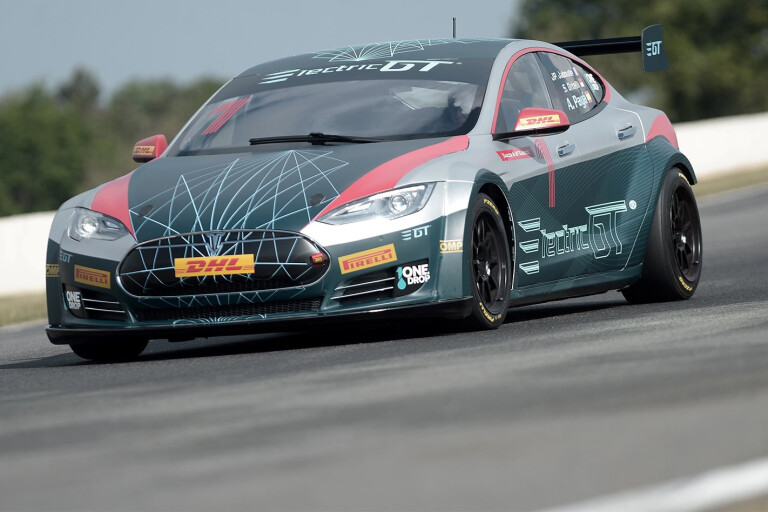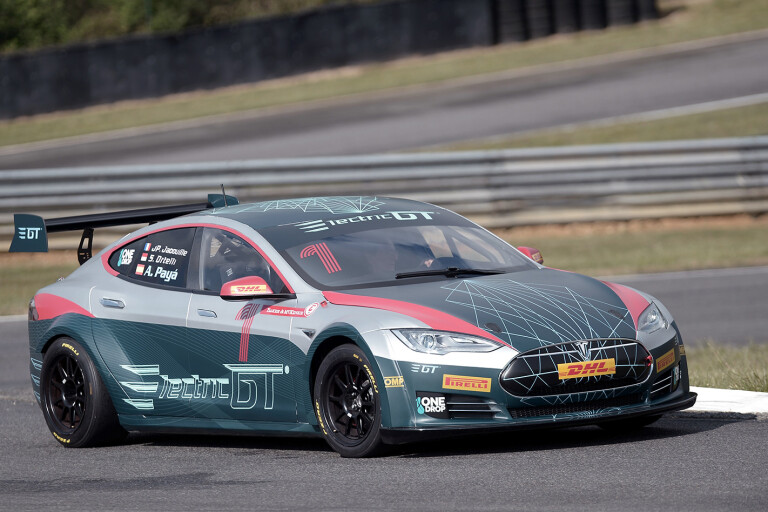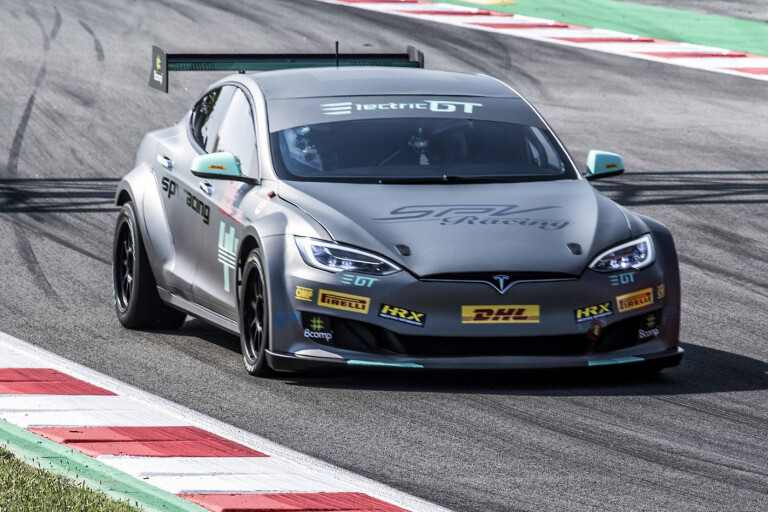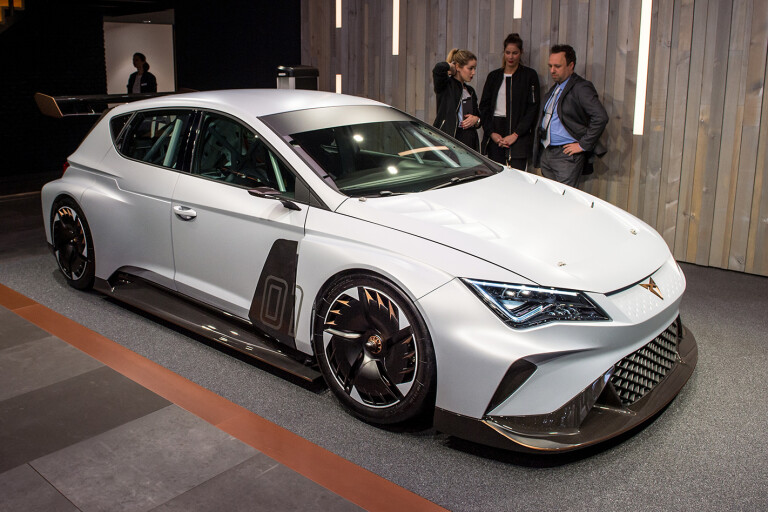
UNTIL recently, the idea of a successful full-electric motorsport series was a killer joke you’d tell at the pub, but now, thanks to Formula E, battery powered racing categories are beginning to proliferate and become a reality.

While solely electric racing categories total just one at this stage, there are two new series which, if all goes to plan, will make their debut before the year’s end.
The first is Electric GT, a hopeful category which has attracted a healthy dose of scepticism due to its prolonged development following its announcement in early 2016, but that scepticism is matched by hesitant excitement, with the category claiming some terrific performance figures.
Using a homologated Tesla Model S P100D, the series hopes to launch later this year with each round consisting of two 60km races, one of which will be held at dusk.

For the first season, Electric GT claims the cars will produce 585kW from a 100kWh battery, cracking 100km/h in 2.1 seconds, before topping out at 250km/h. For the next two seasons the same power figures will be used, with modifications to the Tesla’s braking systems and aerodynamics.
However, by season four, Electric GT claims it will feature 825kW monsters which use a 140kWh battery pack to accelerate to 100km/h in 1.7 seconds, and be capable of reaching a 380km/h top speed.
The claims are part of the category’s ‘five year technical road map’, but whether the series can last its full season remains uncertain with funding still hanging in the balance and multiple delays in developing the first homologated Model S.
Two other electric touring car categories are more likely to be making waves before Electric GT’s 825kW beasts become a reality.
The first is Jaguar’s I-Pace eTrophy – a one-make series which will go live later this year on the supports bill of Formula E’s fifth season.

The category has been created for amateur ‘gentlemen drivers’, with Jaguar providing ‘arrive and drive’ packages in 20 identical I-Pace race cars. The field of paying customers will be joined on the grid by a different VIP driver at each round.
Jaguar will build the I-Pace race cars at the Jaguar Land Rover Special Vehicle Operations (SVO) in Warwickshire, UK, and will be based on the production car, with specific technical data thin on the ground at this stage.
Jaguar says a typical race weekend for the eTrophy will consist of free practice, qualifying sessions, and a 30-minute race.
If single make racing is just a little one-dimensional for you, how about this for some more variety in your zero-emissions battles?
WSC Group is the company behind TCR (Touring Car Racing) which has become the category the FIA has placed at the top of the global touring car tree. WSC Technology is a subsidiary of WSC Group, and earlier this year revealed its eTCR concept for a fully-electric touring car championship.
eTCR racers will be four- or five-door production touring cars, much like the existing TCR series, but instead of traditional combustion engines and transmissions, will use a single-gear rear-drive transmission mated to a common supply package which includes the motor, 65kWh battery pack, and inverters.
SEAT has fully embraced the idea, building a Cupra e-Racer concept for the category which is capable of producing 500kW of power.

WSC Technology has stated it plans to organise "promotional and media events" before officially launching the series.
Moving away from the tarmac is the FIA World Rallycross championship which has confirmed it will be fully electric by 2020.
UK publication Autosport reported earlier this year the series is likely to use a common carbonfibre monocoque tub and safety structure, which will include suspension and braking systems, with a tender currently in place for the battery supplier.
While each of these categories are developing their first-generation cars, Formula E's its Gen2 racer is poised to make its racing debut later this year, which is faster and more powerful than the original vehicle, and removes the need for a mid-race car swap.

Lucas di Grassi, a former series champion, and development driver for the all-electric championship believes the Gen3 cars need to accelerate from 0-200km/h faster than a Formula 1 car. That’s a while off just yet, but the electric racing revolution is coming, whether we like it or not.

COMMENTS